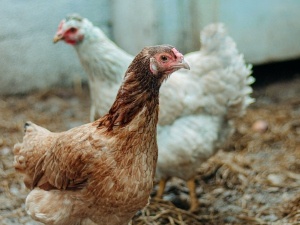
Red skin on humans either means that we’ve accidentally been out in the sun for too long or that there is an irritation on our skin. Does the same go for chickens?
This article looks into why your chickens may have red skin.
Table of Contents
Chickens with red skin:
If your bird has started developing red skin you’d likely be worried and likely think that the bird’s skin is irritated.
Here are reasons why this may be happening to your bird:
Pecking:
If your bird’s feathers are pecked off by other birds, because this bird is low in the pecking order, then the exposed skin will become red because it is irritated by all the pecking.
The bird’s skin will start to become irritated and red because of all the pecking and other birds will be attracted to the red skin on your bird and will peck even more.
What to do:
The pecking order is normal for birds, and a little redness and irritation on the bird’s skin after being pecked is also normal.
What isn’t normal is severe injuries and bleeding on your bird’s skin because of all the pecking.
If your bird’s injuries are so severe that the bird is bleeding then you’d need to remove your injured bird and give it treatment for its injuries.
You’d also need to remove the bully bird and give it a time-out for a bit.
Scald:
Another reason why your bird’s skin may be red is that the bird is suffering from a condition called scald. This condition usually affects your bird’s feet and causes the bird’s feet to start looking very raw and red.
If your bird is constantly stepping on flooring that is full of wet ammonia (from the birds poop) then this chemical may burn your bird’s skin causing scald.
What you’re looking at, the redness on your bird’s feet, is burnt through flesh and tissue.
What to do:
This is quite painful to the bird so rectifying the problem is a must, you need to clear out your birdhouses and clean out the ammonia at the bottom of your birdhouse floor.
If you can’t clean the ammonia out then you’d need to dry the floor so the ammonia-soaked flooring material in your bird’s coop can’t burn the bird’s feet.
Type of bird:
If you’re raising turkin chickens or naked-necked chicken breeds then the redness on certain parts of the body is normal.
These breeds of bird will simply not grow feathers in these parts of their body, and when these parts are exposed to sunlight or air then the skin will go red.
What to do:
This is normal for this type of bird and you don’t have to worry about the bird if this is happening. You can start to worry if the bird seems to be in distress when its skin starts to go red.
Parasites:
Parasites, like lice and mites, can also be the cause of your bird developing red skin.
Parasites live off your chicken by biting into the bird’s skin and sucking its blood. Parasite bites are irritating and the bird will pick at its skin and scratch itself to relieve itself of the irritation causing its skin to go red.
What to do:
If you realize that your bird is infected with parasites then you’d need a permethrin-based poultry dust to get rid of the parasites.
Ridding both your bird and its hen house of the mites at the same time is a must.
If you enjoyed this article then you may also be interested in other bird related articles. Here are some articles that you may be interested in: Baby Chick Wants To Be Held All The Time, Baby Chick Looks Wet, White Spots On Cockatiel Beak, Baby Chick Screaming, Baby Chick Distress Call, Chicken Stuck On Back, Red Rash On Chickens Skin, Baby Chick Laying Down With Wing Out, Baby Chick Won’t Walk Or Open Eyes?


